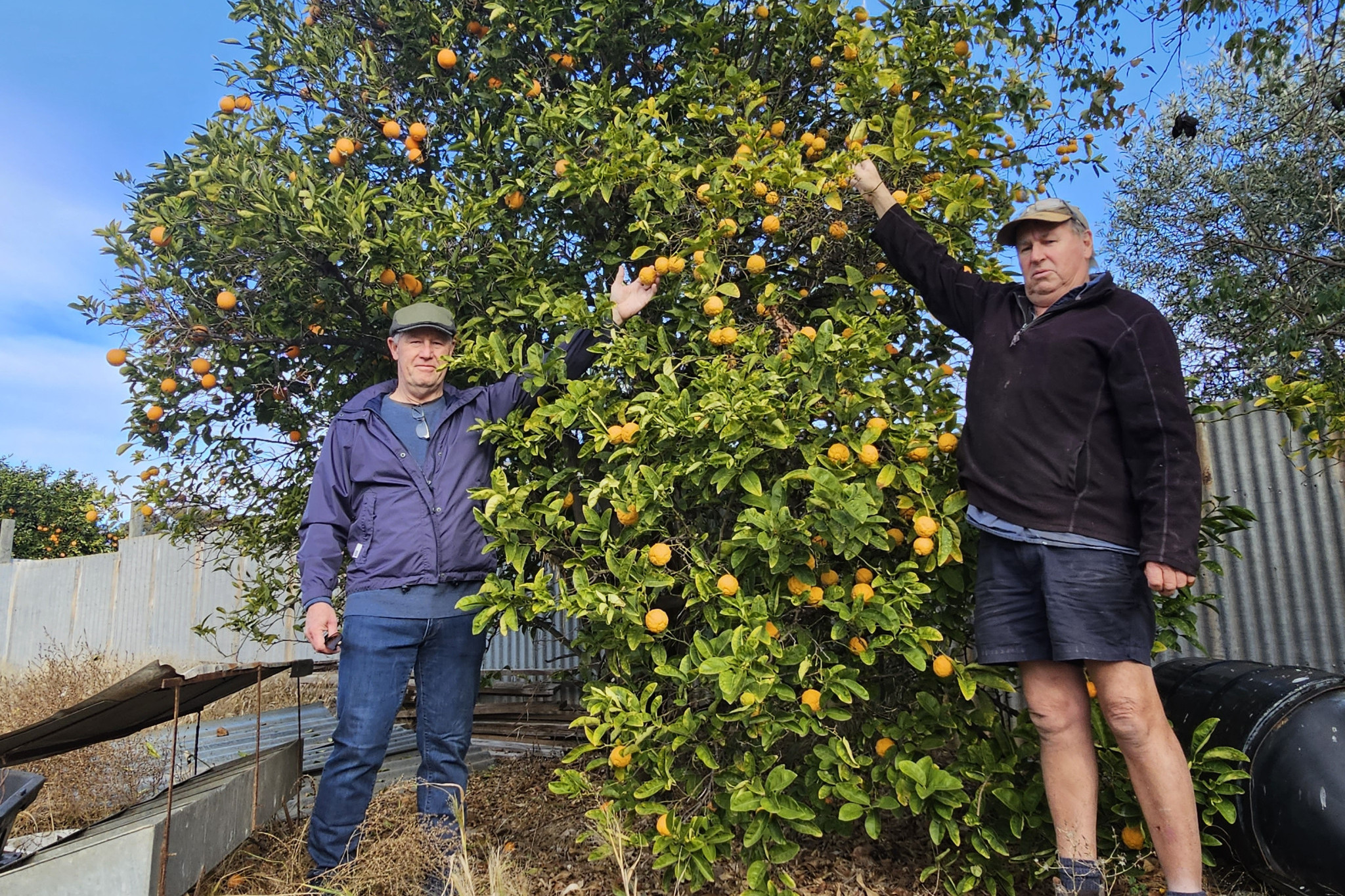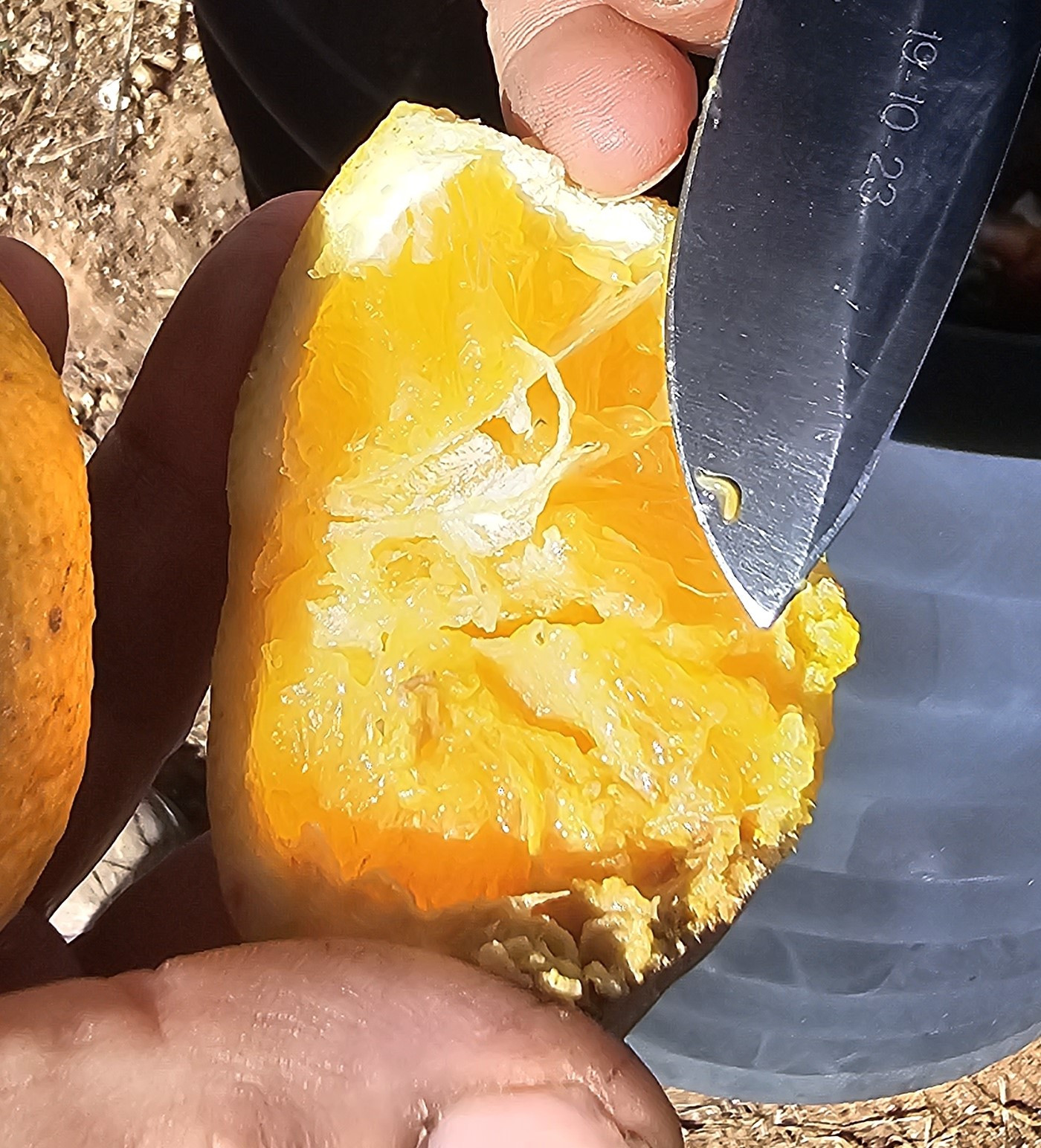Rural
3 July, 2024
Waging war in our backyards
Taking grassroots action to protect Wimmera Mallee crops from biosecurity threats is in everybody's best interests, Rainbow and District Landcare Group says. Whether fruit and fruiting vegetables are being grown for only one household or as part of Australia's multi-billion-dollar domestic and export horticulture industry, the group says every resident in the region can play their part. Group secretary Bernard Young and president Bruce Heinrich are leading the charge against the swarms that continue to wreck havoc across the Wimmera.

Queensland fruit fly - Qfly - is a perennial problem in fresh produce at all levels, both private and commercial, quickly rendering fruit and vegetable crops unusable and therefore worthless to the grower.
More than 300 varieties of cultivated fruit are vulnerable - ranging from stone fruit and grapes to oranges, pomegranates and olives - but the name "fruit fly" is a misnomer.
Qfly also attacks "fruity" vegetables such as melons, squash, avodaco, capsicum, chilies and eggplant.
Although the pest species originated in a much warmer northern climate, scientific studies have shown that up to 10 per cent of a Qfly population that is established in autumn can not only survive a Victorian winter but still be alive and capable of breeding at the end of spring.
“The Rainbow community wanted to tackle the threat of fruit fly,” Mr Heinrich said this week.
“We heard from gardening expert Rob Pelletier from Heritage Fruit Trees at a community meeting in April how fruit fly can impact on homegrown backyard vegetables and fruit.
“Rob outlined methods of control and monitoring used in other districts, and we have information to share with the community.
“You should be prepared to use a range of methods to tackle the problem,” Mr Heinrich said.
“This includes using pheromone baits to attract male fruit flies as this helps to see where the pest is active in your locality.”
Mr Heinrich said pruning was “a very important action” for residents with fruit trees at home, and may need doing more than once a year.
“It is most important to manage fruit tree size by regularly pruning to keep the overall tree height to less than two metres so you can observe the fruit on your tree.”

So impressed were members of the group by Mr Pelletier’s first presentation that they decided to ask him back.
“We’ve invited Rob to return to Rainbow,” Mr Heinrich said.
“He will run a short session on pruning at the heritage orchard at Yurunga Homestead on Sunday July 7, starting at 9am.”
The demonstration will be open not only to members of Rainbow and District Landcare Group but also to the general public.
Anyone interested in attending is asked to register by contacting group secretary Bernard Young at bernard.young54@gmail.com.
“Our Landcare group will continue to look at ways and means we can help the community tackle the problem in the coming months before summer,” Mr Heinrich said.
"This includes management or removal of old, abandoned fruit trees on unowned or uninhabited land."